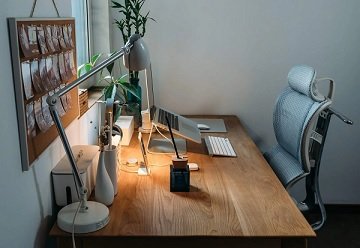When it comes to creating a welcoming and functional living or working space, interior design plays a pivotal role. But have you ever considered the impact of ergonomic design on interior spaces? This article will delve into the importance of ergonomic design in interior spaces and how it contributes to both comfort and efficiency. It will also touch upon how an interior design course may incorporate the principles of ergonomics and more to train future designers in creating spaces that are not only aesthetically pleasing but also incredibly functional.
The Importance of Ergonomic Design in Interiors
Ergonomic design, in essence, revolves around creating environments that cater to the needs and well-being of the people who use them. This concept is not exclusive to office spaces and workstations; it extends to all indoor environments, including homes, schools, hospitals, and more. The fundamental goal of ergonomic interior design is to enhance the overall quality of life for occupants.
Health and Comfort: One of the primary reasons for integrating ergonomic principles into interior design is to ensure the health and comfort of the occupants. Ergonomically designed spaces are tailored to support natural body postures and movements, reducing the risk of physical strain and discomfort. This is particularly important in offices, where people spend long hours working at desks, as well as in homes, where relaxation and well-being are crucial.
Enhanced Productivity: Ergonomics also has a direct impact on productivity. When interior spaces are designed with ergonomics in mind, individuals can work more efficiently and comfortably. Ergonomically designed furniture, such as chairs and desks, can help reduce fatigue and discomfort, allowing individuals to focus better on their tasks. This can lead to increased productivity and reduced absenteeism due to health-related issues.
Accessibility and Inclusivity: Ergonomic design goes hand in hand with accessibility and inclusivity. By considering the needs of individuals with disabilities, interior designers can create spaces that are accommodating and welcoming for all. This not only promotes equality but also ensures that everyone can access and use the space without limitations.
Aesthetic Appeal: Contrary to the misconception that ergonomic design compromises aesthetics, it actually enhances the overall appearance of a space. Ergonomically designed furniture and fixtures can seamlessly blend with the overall design scheme, creating a harmonious and visually appealing environment. This proves that functionality and aesthetics can coexist.
Long-Term Sustainability: Ergonomically designed interiors are not only beneficial for the present but also for the future. By investing in quality furniture and fixtures that adhere to ergonomic principles, spaces become more durable and sustainable. This reduces the need for frequent replacements, saving resources and reducing environmental impact.
Learn from Experts about Ergonomic Principles and More
Interior design courses play a vital role in shaping the professionals who will be responsible for creating future living and working environments. Many reputable interior design programs incorporate ergonomic principles into their curriculum to ensure that future designers are well-versed in creating spaces that prioritize comfort and efficiency.
These courses often cover a range of topics related to ergonomics in interior design, including:
Human-Centered Design: Interior design students learn to put the needs and preferences of people at the forefront of their designs. They study human behavior, movement patterns, and the impact of various design elements on comfort.
Furniture and Fixture Selection: Courses emphasize the selection of ergonomic furniture and fixtures, taking into account factors such as chair ergonomics, desk height, lighting, and the arrangement of furniture in a space to maximize comfort and functionality.
Universal Design: Universal design principles, which focus on creating spaces accessible to individuals of all ages and abilities, are often integrated into an interior design course. This ensures that graduates are prepared to create inclusive environments.
Environmental Sustainability: Sustainability is a significant component of these courses. Students learn to select eco-friendly materials and furniture that not only contribute to ergonomic comfort but also align with environmental conservation goals.
Client Consultations: Interior design programs teach students how to conduct thorough client consultations, where ergonomic considerations are discussed to tailor designs to the specific needs and preferences of the occupants.
The Bottom Line
In conclusion, ergonomic design is a fundamental aspect of interior design that significantly influences the comfort, efficiency, and overall well-being of individuals in indoor spaces. By integrating ergonomic principles into interior design, you can create environments that promote health, productivity, accessibility, and sustainability. Moreover, the inclusion of ergonomic principles in design courses ensures that the next generation of designers will be equipped with the knowledge and skills to create spaces that prioritize the needs of the people who use them. So, the next time you step into a well-designed interior space, take a moment to appreciate the thought and consideration that went into making it not only visually appealing but also comfortable and efficient.



















